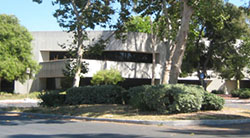
What does “gifted” mean? The term has likely evolved since you were a child. What does it mean to be gifted? Most people might reply that a “gifted” child is one who earns straight A’s, performs well on the Iowa Basics, or can solve quadratic equations late into the night. While these are forms of giftedness, defining gifted as “good at school” is outdated and far too narrow. Here are six different types of giftedness.
Successful
This is the traditional understanding of gifted children: they’re good at school. “Successful” gifted children are obedient in class, do homework without a lot of prompting, test well, and may become perfectionists. Unfortunately, these children might face jealousy from some peers due to being “teacher’s pet.” But in general, most of them are well-adjusted goal-setters.
Successful gifted children do well on tests such as the SAT/ACT. They usually aim for higher education and advanced degrees as they journey through their academic lives. For the most part, they tend to be structured thinkers. Successful gifted children might be able to generate a story or drawing when asked, but creativity is not their strength. Still, they are typically well-rounded and may still perform music or produce art projects, although they may not show much interest in composition or abstract thinking.
Autonomous
Autonomously gifted children are like successful children in that they understand and can perform well in a traditional school system. But they are willing to push boundaries in ways that “successful” gifted children are not. Autonomously gifted children are strong leaders and creative thinkers. They seek opportunities to pursue their interests. For example, if they are interested in trains but their school does not feed this passion, they may look for summer programs or extracurricular opportunities to build train sets or visit stockyards.
Challenging and Creative
Challenging and creative students are generally the opposite of “successful” gifted children. They may harbor extraordinary creative gifts as writers, composers, artists, photographers, graphic artists, or fashion designers. Their creative dispositions put them at odds with a traditional school system.
Challenging and creative students may be bored or exhibit behavioral problems because they feel they do not fit into the unbreakable structure of a typical school day. They may also face bullying because their gifts set them apart from their peers in ways they do not understand. A flexible educational environment might work best for challenging and creative students.
Underground
While many children’s giftedness is discovered in their primary years, some students may slip through the usual testing. Others don’t even manifest their giftedness until their middle school years. Some gifted children develop asynchronously (at a different pace from their peers); their gifts may be hidden or masked until later in their traditional education.
Underground gifted children tend to be girls who are of late elementary to early middle school age, usually around grades 4-6. This is when bullying is at its peak in most schools. Children at this age are very sensitive about fitting in with their peers.Students who uncover their giftedness (or who have begun to develop it in late primary school) may take steps to blend in as much as possible.
Forcing underground gifted students to perform is never the answer, as the child may feel anxiety over loyalty to his or her talents and peers. This psychological tug of war may result in changes in behavior, including withdrawal, plummeting academic performance, or a refusal to take part in gifted education or former areas of interest.
Underground students need encouragement and understanding. Breaks from usual activities should be permitted, but the child should know that they may return to them at any time. Students should have choices in what they read, study, and perform.
Potential Dropout or At Risk
These students require the most sensitivity and patience. They may come from an unstable home environment or a culture which discourages academic excellence or gifted education (especially for girls). Some may never have experienced support for basic educational goals, or their parents or caregivers might be completely disengaged from their school experience.
Due to their uphill battle, dropout or at-risk children are usually identified later in their school careers, and may not manifest their gifts until they are out of the school system. This usually does not take place, however, without a great deal of struggle.
At-risk or dropout students may exhibit constant anger at a school system which may have met the needs of every type of gifted children except them. The at-risk student might be a talented athlete, artist, or creator. But, since they don’t fit in with the traditional school model and may not have anyone advocating on their behalf, they may become bored, act out, or avoid school altogether. Flexible and alternate school arrangements may work best for them.
Doubly Exceptional
Doubly exceptional (or 2E) children are those who are gifted and who also exhibit a learning or physical disorder. The disability may hide the gift, or the gift may overwhelm the learning/physical challenge, leaving one or the other undetected. Doubly exceptional students may also suffer from attention or processing disorders.
Doubly exceptional children are sometimes mislabeled as “lazy,” since they perform well in one area but struggle in another. Their learning disability should be taken into consideration while their giftedness is enriched and challenged. This means that they might require accommodations while showing abilities far beyond their peers at the same time. For example, a student might post stratospheric scores over and over again in language arts, but exhibit barely-competent abilities in math.
Some students who are doubly exceptional might experience depression or low self-esteem because they may have been tracked into remedial programs despite their giftedness, or struggle with basic skills in gifted classes. They may also fight to fit in with their peers or wonder how they might find their place in general.




